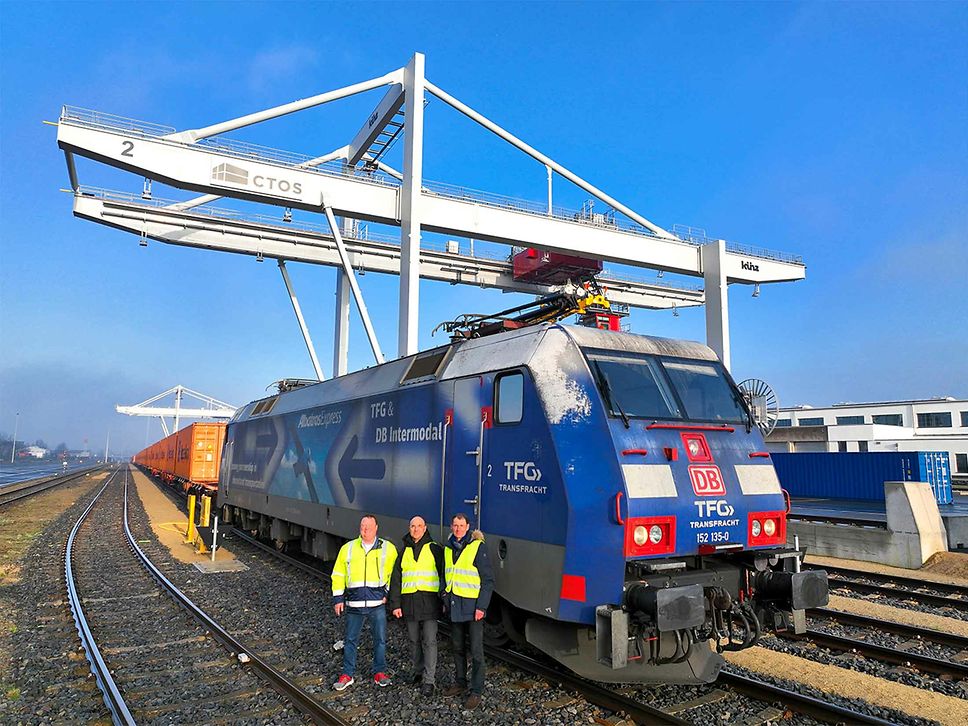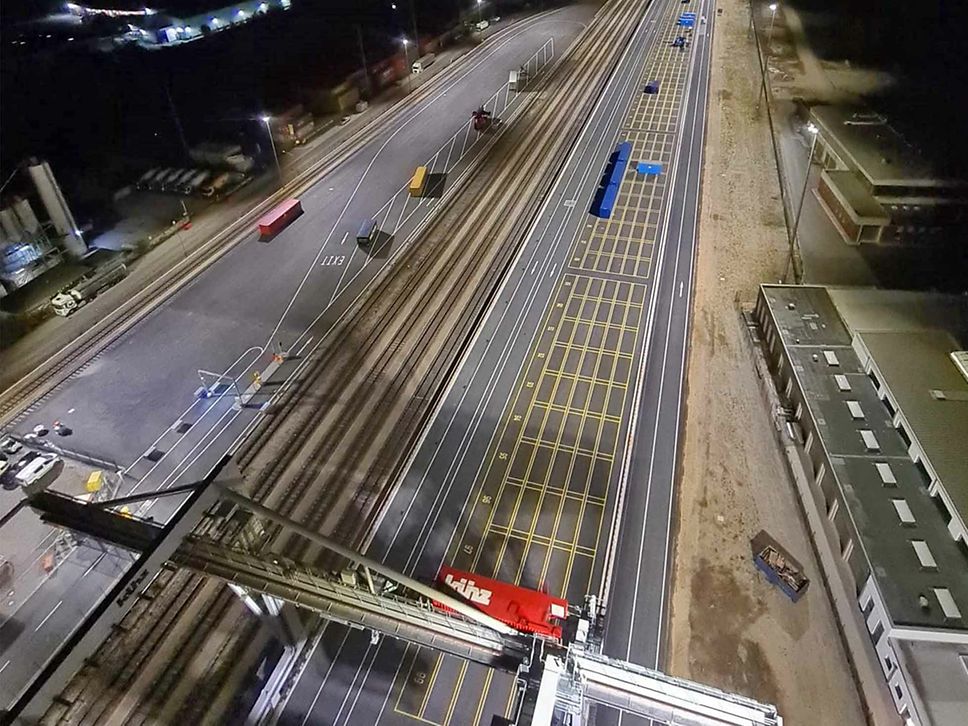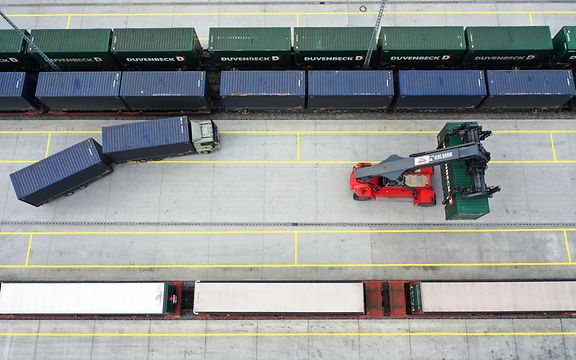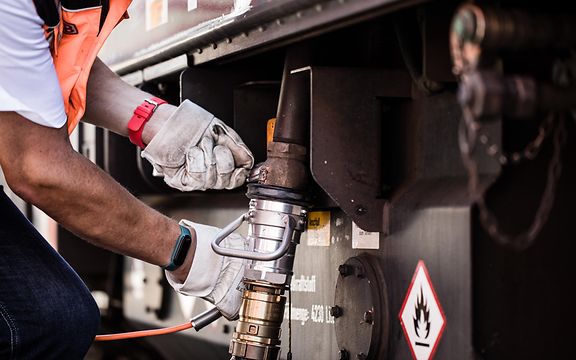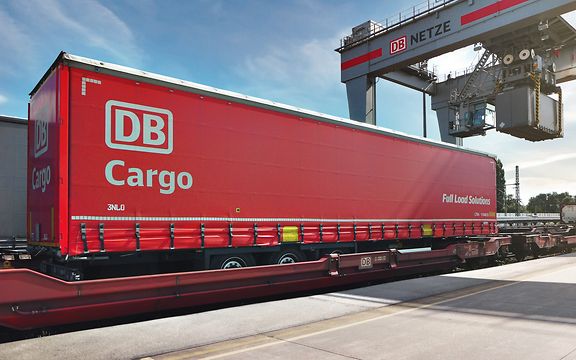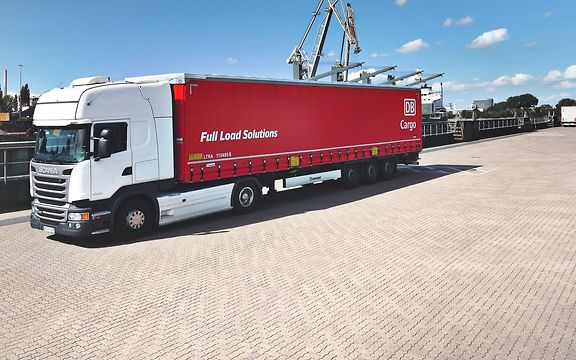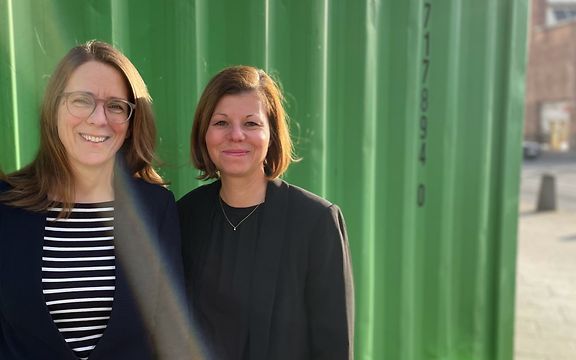Container Terminal Osnabrück sets climate-friendly standards
TFG Transfracht and terminal operating company offer new direct service.
As of January 2022, TFG Transfracht and Container Terminal Osnabrück (CTOS) now offer six new direct links a week between Osnabrück and Hamburg. This climate-friendly rail solution also gives the city in Lower Saxony and the surrounding economic area a gateway to the "Iron Silk Road". Several freight trains now travel daily between Europe and China on the route.
Almost 40 metres high, some 50 metres wide and with a main girder weighing almost 70 tonnes, two gantry cranes have towered over the site of the new container terminal at the Port of Osnabrück since last April. They are the centrepiece of the new transhipment point, which opened in autumn 2021 – and are now more in demand than ever.
"With six new direct links to Hamburg every week, we've significantly increased our frequency again," says Björn Tiemann, Managing Director of Container Terminal Osnabrück (CTOS), the operating company which launched the service in January 2022 together with the DB Cargo subsidiary TFG Transfracht. "TFG's connections and the new terminal underscore Osnabrück's importance as a hub for German and international freight transport."
New service saves up to 5,000 tonnes of CO₂
The gantry cranes load and unload block trains up to 700 metres long at the new terminal. The freight – mostly consumer and commercial goods or products from the region's industrial companies – is delivered to the Port of Hamburg in less than two hours. "In light of the significant increase in freight transport, not only in the greater Osnabrück area, the new terminal offers a sustainable alternative to conventional road transport," says Tiemann.
The good location makes it an attractive loading point in the region that offers many opportunities to leverage synergies with existing terminals and routes. Thanks to the new connections, TFG Transfracht and CTOS will shift a further 30,000 TEU from road to rail in the region every year, saving up to 5,000 tonnes of CO2.
To operate the terminal at the Port of Osnabrück, which handles intermodal load units, CTOS exclusively uses renewable power, setting climate-friendly standards in Germany and internationally. The same is true for TFG's six new rail links, which are operated using the TFGeco train product, making them 100% carbon-free.
A bridge to Asia
Tiemann also sees this alternative as a signal of what's to come: "Over short distances in particular, combined transport is in fierce competition with fast and flexible truck transport, which can offer high-frequency service if need be. Offering this service to Hamburg is therefore an important building block for attractive and environmentally friendly CT connections in the region. We're bolstering the expansion of short-haul routes and helping drive the internationalisation of rail freight transport."
The new service should also be seen as a bridge to Asia, Tiemann says: "The international ocean freight situation has been very difficult for months. That's why intercontinental rail transport is playing an increasingly important role in global supply chains. This is especially true for the Iron Silk Road to China, which we and logistics providers in the Osnabrück area want to use to a greater extent. Our new links are building a bridge to Asia."
CTOS sets climate-friendly standards
"We are delighted to expand our range of shortland feeders with the Osnabrück connection and meet the growing demand for climate-friendly transport solutions," says Frank Gedat, Head of the North East Regional Division at TFG Transfracht. "By expanding rail transport, we are offering a real rail alternative to road and helping to achieve not only our company's targets, but those of our Group as well."
The new direct links also contribute to one of the long-term objectives of CTOS, which is represented by its managing directors Björn Tiemann and Dr Clemens Haskamp and its shareholders, the Klaus Hellmann family, Koch International, Nosta Group and Terminal Besitzgesellschaft OS. "Together, we want to offer consigners and consignees the ability to switch to rail and promote environmentally friendly transport chains," Tiemann says.
Terminal to shift 150,000 load units onto trains
The new, state-of-the-art terminal is located at the Port of Osnabrück, which was already an important economic factor for the entire region, with a volume of more than 1.2 million tonnes of goods handled in 2019. Construction – a joint project between the Osnabrück and Dortmund public utilities and Osnabrück freight forwarders – began in spring 2020 on a 9.5 hectare former barracks site.
Today, the site has capacity for 2,000 TEU, and cargo is handled on four 730 metre tracks and two 300 metre tracks. The two gantry cranes now not only serve as the terminal’s highly visible landmark; they are also expected to shift up to 150,000 load units from road to rail every year.
